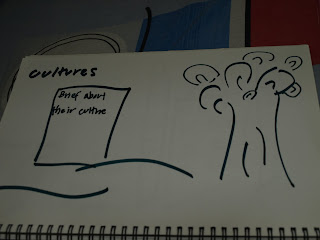The Orang Asli are the indigenous minority peoples of Peninsular Malaysia. The name is a Malay term which transliterates as 'original peoples' or 'first peoples.' It is a collective term introduced by anthropologists and administrators for the 18 sub-ethnic groups generally classified for official purposes under Negrito, Senoi and Proto-Malay. They numbered 105,000 in 1997 representing a mere 0.5 per cent of the national population.
The Orang Asli, nevertheless, are not a homogeneous group. Each has its own language and culture, and perceives itself as different from the others. Linguistically, some of the northern Orang Asli groups (especially the Senoi and Negrito groups) speak languages - now termed Aslian languages - that suggest a historical link with the indigenous peoples in Burma, Thailand and Indo-China.The members of the Proto-Malay tribes, whose ancestors were believed to have migrated from the Indonesian islands to the south of the peninsula, speak dialects which belong to the same Austronesian family of languages as Malay, with the exceptions of the Semelai and Temoq dialects (which are Austroasiatic).The Orang Asli have equally varied occupations and ways of life. The Orang Laut, Orang Seletar and Mah Meri, for example, live close to the coast and are mainly fishermen. Some Temuan, Jakun and Semai people have taken to permanent agriculture and now manage their own rubber, oil palm or cocoa farms.
According to the Encyclopedia of Malaysia, the Negritos, who number approximately 2,000, are regarded as the earliest inhabitants of the Malay Peninsula. They are of Australo-Melanesian affinity and probably descend from the people of Hoabinhian cultural period, with many of their burials found dating back 10,000 years ago. They speak the Aslian languages which is part of the Austro-Asiatic language family, as do their Senoi agriculturalist neighbours. Negritos belong to various subgroups, namely the Kensiu, Kintak, Lanoh, Jahai, Mendriq and Bateq. Those from Perak, Kedah and Pahang are also known as Sakai, the meaning of "Sakai" is debt slaves, while those from Kelantan and Terengganu were called Pangan, the forest peoples. The Senoi and Proto-Malay arrived much later probably during the Neolithic period.
The government agency entrusted to oversee the affairs of the Orang Asli is the Jabatan Hal Ehwal Orang Asli (Department of Orang Asli Affairs) (JHEOA). This body is under the Malaysian Ministry of Rural Development, and it was first set up in 1954.[12] Among its stated objectives are to eradicate poverty among the Orang Asli, improving their health, promoting education, and improving their general livelihood. There is a high incidence of poverty among the Orang Asli. In 1997, 80% of all Orang Asli lived below the poverty line. This ratio is extremely high compared to the national poverty rate of 8.5% at that time.[13]
Some legislations which concerns Orang Asli are the National Land Code 1965, Land Conservation Act 1960, Protection of Wildlife Act 1972, National Parks Act 1980, and most importantly the Aboriginal Peoples Act 1954. The Aboriginal Peoples Act 1954 provides for the setting up and establishment of the Orang Asli Reserve Land. However, the Act also includes the power accorded to the Director-General of the JHEOA to order Orang Asli out of such reserved land at its discretion, and award compensation to affected people, also at its discretion. A landmark case on this matter is in the 2002 case of Sagong Tasi v. Government of Selangor. The case was concerned with the state using its powers conferred under the 1954 Act to evict Orang Asli from gazetted Orang Asli Reserve Land. The High Court ruled in favour of Sagong Tasi, who represented the Orang Asli, and this decision was upheld by the Court of Appeal.
The Orang Asli are theoretically classified as Bumiputras, a status signifying indigenity to Malaysia which carries certain social, economic, and political rights, along with the Malays and the natives of Sabah and Sarawak. However, this status is generally not mentioned in the constitution. It is also not shared by general Malay society, who argue the Orang Asli were never identified by the invading colonial powers (Portuguese, Dutch and British) as the sovereign rulers of the Malay Peninsula
The division of Orang Asli into three categories are not due to linguistic differences but merely sociological. The Semelai language, for example, is part of the Austro-Asiatic language group, whereas the other Proto-Malay groups, such as the Temuan language, are part of the Austronesian language group. The Semelai and the majority of Orang Asli sub-ethnics speak languages classified as Aslian languages. This is further divided into the Jahaic languages (North Aslian), Senoic languages, Semelaic languages (South Aslian), and Jah Hut. The languages which fall under the Jahaic language group are the Che Wong, Jahai, Bateq, Kensiu, Kintak, and Menriq languages. The Lanoh language, Temiar language, and Semai language fall into the Senoic language category. Languages that fall into the Semelaic group include the Semelai language, Semoq Beri language, and Besisi language (language spoken by the Mah Meri group). Meanwhile, some Orang Asli minorities speak languages classified as Aboriginal Malay languages. This includes the Jakun and Temuan languages among others.Besides these, most Orang Aslis are fluent in the Malay language, the official language of Malaysia.
refrences
http://en.wikipedia.org/wiki/Orang_Asli


